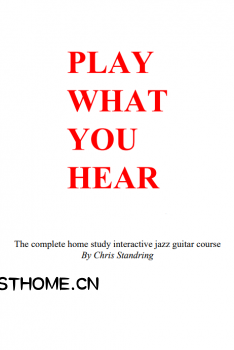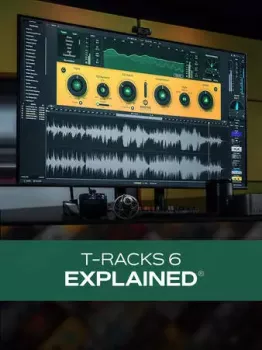PDF MP3 | 122.70 MB
英文简介:
Play What You Hear is a self-study course for jazz guitar. It was created by Chris Standring, a jazz guitarist and recording artist who has already recorded 8 individual albums (his latest CD is entitled Love & Paragraphs) and has featured as a guest on many others. With "Play What You Hear" course, Chris Standring wanted to give aspiring jazz musicians an effective, practical and easy-to-understand approach to improving their jazz improvisation skills. The ultimate goal of this course is, as the title suggests, to have you become a musician that can ‘play what you hear'.
The course covers everything, from recognizing sounds against harmonies, playing melodies up and down the fretboard, learning how to construct even the most advanced jazz chords (without having to memorize all of the shapes), completely familiarizing yourself with the fretboard, so you can play anywhere you like without having to look down at the guitar neck, and be able to hear things that you were never able to hear before... In fact, Chris Standring promises that this course alone will give you enough jazz guitar instructions to last you the next 15 years.
You can get Play What You Hear course on a CD, shipped to your doorstep, or you can simply download it to your computer. To choose the option best suited for you, visit the product's website.
- Melody
- The major scale and its use
- Variations on the major scale/simple melodic patterns
- The diatonic scale - analysis
- Diatonic sounds and their relative chords
- Seeing is conceiving (visualizing harmony)
- More melodic patterns
- Diatonic sounds through moving key centers
- Harmony
- Embellishing chordal accompaniment
- Voice leading and chordal accompaniment
- Playing over changes
- The linear method and changes
- Stepwise resolution: bebop
- b9 resolutions
- The diminished scale and linear exercises
- Diminished patterns for dominant b9 chords
- More b9 resolutions
- The back-cycling turnaround
- b9 resolutions for back-cycling
- The relative minor turnaround
- The melodic minor scale and b5 resolutions
- Melodic minor patterns for dominant b5 chords
- b5 resolutions
- #5#9 resolutions
- The blues scale
- Recognizing triads
- Phrase development
- Motifs, themes and variations
- Sequential 2, 5 resolutions
- Tritone substitution
- Sequential tritone resolutions
- And now to the music - example jazz standard sequences
官网: https://www.chrisstandring.com/pwyh-volume-one.html



![French Connections: From Discotheque to Daft Punk – The Birth of French Touch by Martin James EPUB [EN]](https://audioz.download/uploads/posts/2024-09/thumbs/1727455731_407930774.webp)
![Phenomenological Investigations of Sonic Environments by Martin Nitsche, Ivan Gutierrez, Ji?í Zelenka and Vít Pokorny EPUB [EN]](https://audioz.download/uploads/posts/2024-09/thumbs/1727452129_2730555638.webp)
![Language is Music: Over 100 Fun and Easy Tips to How to Learn a Foreign Languages by Susanna Zaraysky EPUB [EN]](https://audioz.download/uploads/posts/2024-09/thumbs/1727389625_1640535344.webp)
![Cultural Sustainabilities: Music, Media, Language, Advocacy Edited by Timothy J. Cooley PDF [EN]](https://audioz.download/uploads/posts/2024-09/thumbs/1727387364_2203066536.webp)
评论0